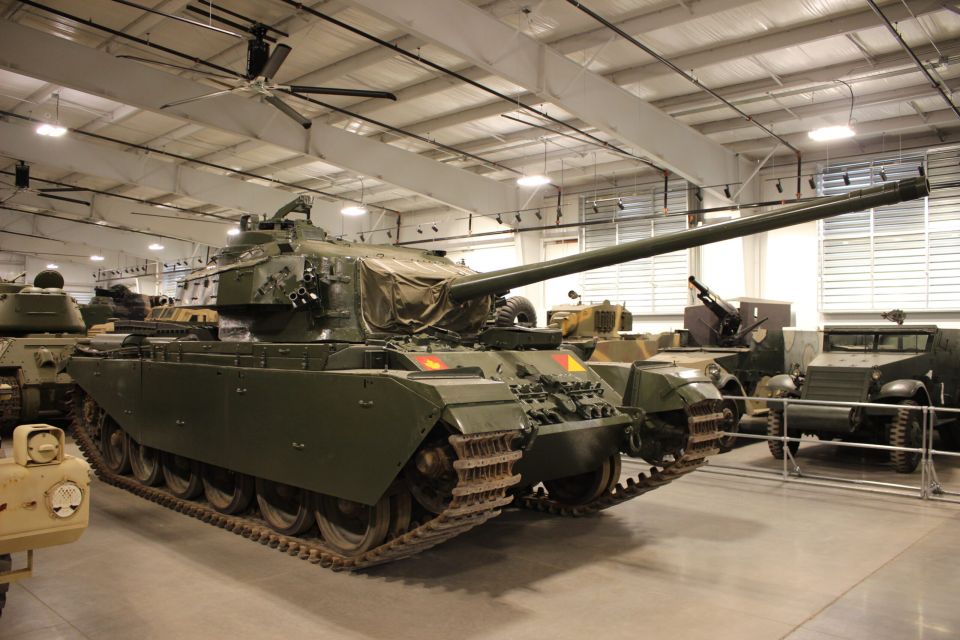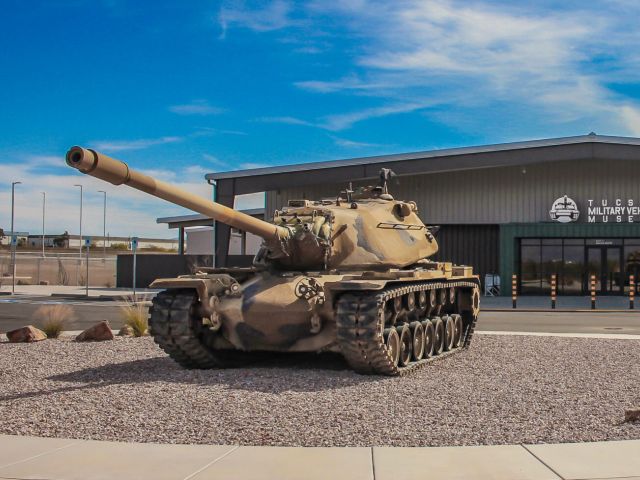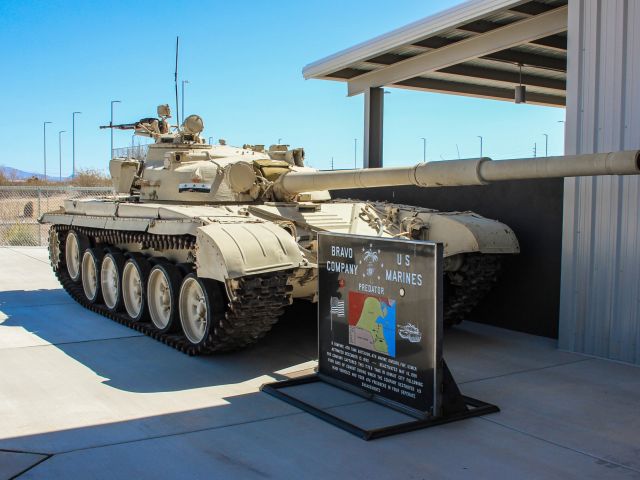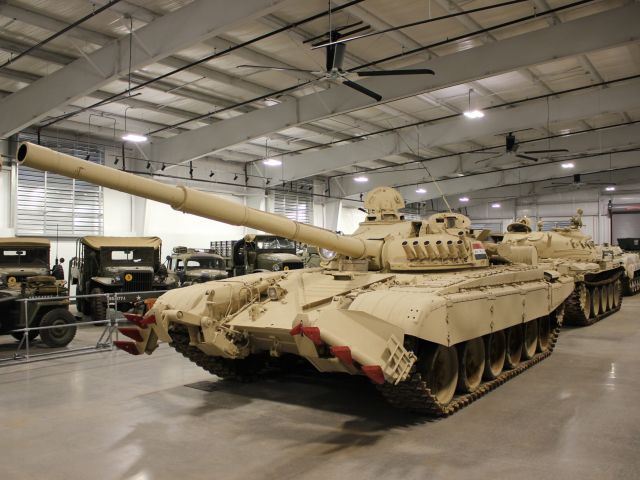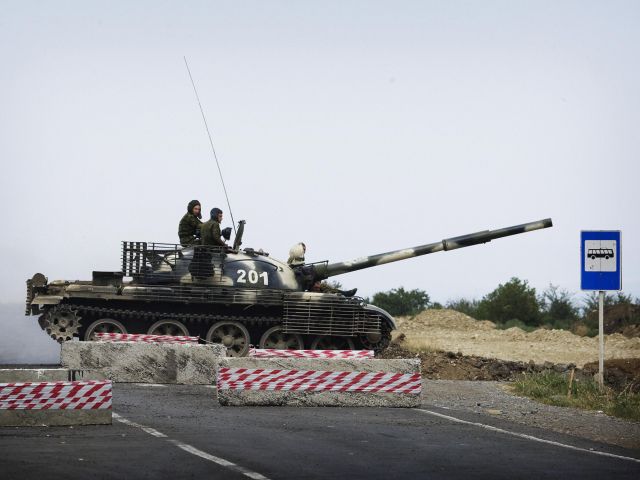Technical Specifications
-
Enter Service:1946
-
Crew:4
-
Weight:42.5 tons
-
Dimensions:Length: 32 ft 3 in (gun forward), Width: 11 ft 2 in, Height: 9 ft 11 in (over turret hatch)
-
Armament:Main: 20pdr (84 mm) rifled gun; Secondary: .30 in caliber machine gun
-
Armor:4–6 in
-
Powerplant:Rolls-Royce Meteor V 12 Gasoline engine, 650 hp
-
Performance:Speed: 22 mph, Range: 120 mi
Description
The Centurion became the main battle tank for the British Army immediately following the Second World War. Manufactured during the final year of the war, it is widely considered one of the most successful tanks of the era. The Centurion’s design was based on the British Army’s mechanized warfare experiences learned from the tank battles fought in the North Africa deserts between 1940 and 1942. Blitzkrieg tactics demonstrated the need to build a tank with multiple capabilities to engage various modern targets, artillery, anti-tanks guns, tanks, and the usual infantry units. Development of the Centurion started in 1943, and production was launched in January 1945.
By the war’s end in May 1945, six prototypes were delivered to Belgium for testing. The Centurion’s design featured a dual-purpose gun capable of firing both high explosive rounds and armor piercing projectiles. It had sufficient armor to withstand enemy anti-tank weapons and tank rounds. It first entered combat in 1950 with the British Army supporting UN forces in the Korean War. The Centurion was the first British tank fitted with L7 105mm gun. Between 1946 and 1962, over 4,400 Centurions were built, consisting of 13 Marks, and multiple variants. Over time, multiple armies were supplied with Centurion tanks. It has been used in dozens of campaigns around the world and presently remains in service in small numbers.
